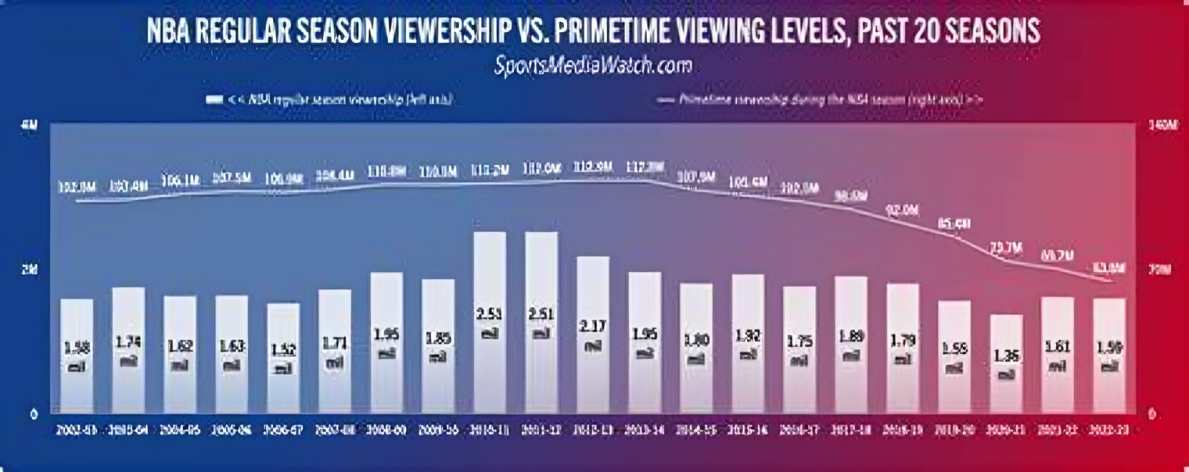
NBA TV Ratings: A Comprehensive Guide to Trends, Influences, and Future Prospects
The NBA has long been one of the most popular professional sports leagues in the world. With global superstars, high-stakes competition, and dramatic storylines, the league naturally garners millions of viewers every season. But when it comes to analyzing the NBA’s popularity, NBA TV ratings serve as a crucial metric. In this article, we’ll dive deep into the world of NBA TV ratings, exploring their historical trends, what influences them, and what the future holds.
Introduction to NBA TV Ratings
NBA TV ratings refer to the number of viewers watching NBA games broadcast on television, including national networks like ESPN, ABC, TNT, and NBA TV itself. These ratings are compiled by Nielsen and other data tracking companies, offering insights into how many people tune in to watch a particular game or series.
High TV ratings are crucial for the league and its partners, as they determine advertising revenue, network deals, and public interest. Let’s explore the landscape of NBA TV ratings over the years and how they impact the broader business of basketball.
Why TV Ratings Matter
Revenue Generation
TV ratings directly correlate with advertising income. A game with millions of viewers is highly attractive to brands looking to market their products. The NBA earns billions in media rights deals, thanks largely to strong ratings on national broadcasts.
Fan Engagement
Higher ratings often reflect increased fan engagement. If fans are watching more games, it’s a sign of healthy interest in the league. Ratings help gauge which teams, players, or matchups draw the most attention.
Strategic Planning
NBA executives use ratings to shape the season schedule, select marquee matchups, and make decisions on game timings to maximize viewership.
Historical Trends in NBA TV Ratings
The history of NBA TV ratings can be divided into several distinct eras:
- 1980s Boom: Led by the rivalry between Larry Bird and Magic Johnson, NBA games started attracting national attention.
- 1990s Peak: The Michael Jordan era saw unprecedented viewership, especially during NBA Finals games.
- 2000s Decline: Following Jordan’s retirement, ratings dipped, although stars like Kobe Bryant and LeBron James helped keep the league in the spotlight.
- 2010s Recovery: The Warriors-Cavaliers rivalry and rise of social media rejuvenated interest.
- 2020s Shift: Viewership patterns changed drastically due to streaming and the COVID-19 pandemic.
Factors Affecting NBA TV Ratings
Star Power
LeBron James, Steph Curry, Kevin Durant, and other superstars have a massive influence on ratings. Games featuring marquee players often outperform others.
Competitive Matchups
Games between evenly matched teams—especially rivals—attract more viewers than predictable blowouts.
Time Zones and Scheduling
Games played on the West Coast often start late for Eastern viewers, impacting ratings. Weekend games and prime-time matchups perform better.
Political or Social Controversies
Political stances or social justice messaging, while important, have at times led to viewer backlash or boycotts that temporarily affected ratings.
The Role of Streaming in Modern Viewership
Cord-Cutting Trends
As more people ditch cable TV in favor of streaming services, traditional ratings are no longer the sole indicator of audience size. Platforms like NBA League Pass, ESPN+, and YouTube TV also host games.
Multi-Screen Viewing
Many fans follow games through highlights, social media clips, and streaming rather than full live broadcasts, which traditional TV ratings don’t always capture.
Digital Metrics
The NBA now tracks engagement across YouTube, Instagram, TikTok, and Twitter, offering a fuller picture of viewership in the digital age.
NBA TV Ratings by Season (2010–2025)
Here’s a quick look at how ratings have changed year-over-year:
| Season | Average Finals Viewership (Millions) | Notes |
| 2010 | 18.1 | Lakers vs. Celtics – massive appeal |
| 2016 | 20.2 | Cavaliers’ comeback vs. Warriors |
| 2020 | 7.5 | Pandemic bubble affected viewership |
| 2021 | 9.9 | Suns vs. Bucks – lower market teams |
| 2023 | 11.6 | Nuggets vs. Heat – rise in streaming viewership |
| 2025* | TBD | Projected to rise with global partnerships |
*Note: 2025 projections depend heavily on star availability and playoff competitiveness.
Star Power and Matchups: Key Ratings Drivers
When LeBron plays on Christmas Day or Steph Curry leads the Warriors into the playoffs, ratings spike. The 2016 NBA Finals, featuring the Warriors vs. Cavaliers, remains one of the highest-rated in history due to star power and competitive drama.
Matchups involving legacy franchises like the Lakers, Celtics, or Bulls typically perform better than smaller-market teams unless there’s a compelling storyline.
How COVID-19 Changed the Game
The 2019–2020 season faced unprecedented challenges. Games were suspended mid-season, later resumed in the Orlando bubble with no live audience. Ratings during the bubble dropped significantly due to:
- Viewer fatigue
- Competing events (NFL, MLB)
- Time zone issues
- Lack of fan energy in broadcasts
However, it also marked a turning point for digital strategy, with the NBA ramping up its streaming and social media efforts.
NBA TV Ratings vs. Other Major Leagues
NBA vs. NFL
The NFL continues to dominate U.S. sports ratings, with Super Bowl games regularly drawing over 100 million viewers. NBA Finals typically draw 10–20 million.
NBA vs. MLB
NBA has surpassed MLB in terms of global viewership and younger demographic appeal.
NBA vs. NHL
NBA games consistently outdraw NHL broadcasts, both nationally and globally.
Regional Viewership Patterns
Ratings vary drastically by region. For example:
- Los Angeles and New York markets are powerhouses for ratings.
- Midwestern cities like Milwaukee or Cleveland often see local surges during strong playoff runs.
- International markets such as China, the Philippines, and Africa contribute significantly through digital viewership.
Marketing, Media Rights, and Revenue
The NBA signed a $24 billion media rights deal in 2014 with ESPN and Turner Sports. In 2025, this deal is up for renegotiation and expected to bring in even more revenue, influenced largely by rising NBA TV ratings and digital reach.
Increased revenue means:
- Higher player salaries
- Bigger team valuations
- Greater investments in international expansion
Future of NBA TV Ratings
Global Growth
The NBA is aggressively targeting global markets with exhibition games, social media content in local languages, and international player development programs.
Personalized Content
Micro-highlights, player-specific streams, and multi-camera options may redefine how fans engage with games.
Augmented and Virtual Reality
Future broadcasts may include immersive experiences through VR or AR, adding new dimensions to TV viewership.
FAQs
Q1: What are NBA TV ratings?
NBA TV ratings are numerical values indicating how many people are watching NBA games on television. They help networks and advertisers determine the popularity and financial value of specific games.
Q2: Why did NBA TV ratings drop in 2020?
The 2020 ratings dropped due to the COVID-19 pandemic, which led to delayed schedules, lack of live audiences, and competing entertainment options.
Q3: Which NBA Finals had the highest ratings?
The 1998 Finals between the Chicago Bulls and Utah Jazz (Michael Jordan’s last with the Bulls) remains the highest-rated NBA Finals series in history.
Q4: Do streaming numbers count in NBA TV ratings?
Traditional TV ratings typically exclude streaming. However, the NBA is increasingly including digital metrics in their internal analysis of audience reach.
Q5: How do NBA TV ratings affect players?
Higher ratings mean more revenue for the league, which translates into higher salary caps and individual player earnings.
Final Thoughts
The landscape of NBA TV ratings is evolving quickly. While traditional cable viewership has seen some decline, the NBA remains a global entertainment powerhouse, especially with younger and international fans. The league’s strategic emphasis on digital content, global outreach, and star-driven narratives ensures that its ratings—whether on TV or streaming—continue to matter.
As the NBA enters a new era of technological innovation and global expansion, expect the ratings conversation to shift from just television to a broader, multi-platform understanding of fan engagement. Still, one thing remains constant: when the stars shine brightest, fans around the world tune in.



